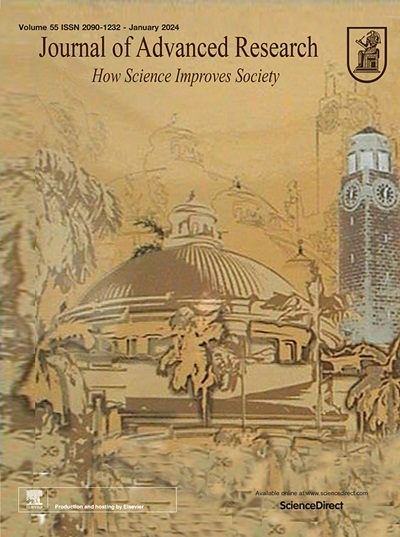红外热成像引导下调节巨噬细胞铁下垂促进压伤愈合
IF 13
1区 综合性期刊
Q1 MULTIDISCIPLINARY SCIENCES
引用次数: 0
摘要
背景准确识别和调节巨噬细胞向促炎(M1-like)或抗炎(M2-like)状态转变的时间对于改善压力性损伤(PIs)中的慢性炎症至关重要。分析了不同愈合结果的伤口温度变化规律,并计算出最佳伤口温度范围,以准确指导 100 例 PIs 患者的抗炎治疗时间。结果应用 IRT 监测 36.23 ℃ 至 37.37 ℃ 范围外的 PIs 温度是一个潜在的风险指标,可及时指导治疗,显著提高 PIs 愈合结果的疗效。在小鼠 PIs 愈合过程中也观察到了这种伤口温度变化,这是 M1 类/M2 类巨噬细胞失衡和随后慢性炎症的结果。从机理上讲,有证据表明,PIs 中的铁蛋白沉积被过度激活,与 M2 样巨噬细胞相比,用 iNOS/NO- 富集 M1 样巨噬细胞可增强其对铁蛋白沉积的抵抗力,从而导致 M1 样/M2 样巨噬细胞的失衡和随后伤口温度的改变。结论通过 IRT 监测的温度变化表明,NO- 供体调节 PIs 中 M2 样巨噬细胞对铁蛋白沉积的抵抗力可显著改善慢性炎症。这为应用 IRT 指导治疗策略以精确促进 PIs 愈合奠定了基础。本文章由计算机程序翻译,如有差异,请以英文原文为准。

Modulation of Macrophage ferroptosis under the guide of infrared thermography promotes the healing of pressure injuries
Background
Accurately recognizing and regulating the transition time of macrophages to a pro- (M1-like) or anti-inflammatory (M2-like) state is essential for improving chronic inflammation in pressure injuries (PIs).Objective
This study aimed to evaluate the effectiveness of infrared thermography (IRT) in measuring wound temperature of PIs for the purpose of guiding treatment in regulating chronic inflammation.Methods
The healing process of 21 patients with PIs was monitored using IRT prospectively followed for 30 days. The wound temperature changing pattern of different healing outcomes were analyzed and calculated the optimal wound temperature range to guide the treatment time of anti-inflammation for 100 patients with PIs accurately. Additionally, the molecular mechanisms underlying the observed temperature changes in a mouse model of PI were investigated, and the effect of IRT-guided chronic inflammation targeting ferroptosis modulation on PIs was validated.Results
The application of IRT to monitor PIs temperatures outside the 36.23 °C to 37.37 °C range is indicative of a potential risk indicator, which allows for the timely guidance of treatment to markedly enhance the efficacy of PIs healing outcomes. This wound temperature change was also observed during the process of PIs healing in mice, as a result of the imbalance of M1-like/M2-like macrophages and the subsequent chronic inflammation. Mechanically, evidence indicates that ferroptosis is hyperactivated in PIs, and the enrichment of M1-like macrophages with iNOS/NO• can enhance their resistance to ferroptosis compared with M2-like macrophages, resulting in the imbalance of M1-like/M2-like macrophages and subsequent alteration of wound temperature.Conclusions
The modulation of M2-like macrophage resistance to ferroptosis in PIs by NO• donors, suggesting by IRT-monitored temperature changes, has been demonstrated to significantly improve chronic inflammation. This establishes a foundation for the application of IRT to direct a therapeutic strategy for the precise promotion of PIs healing.求助全文
通过发布文献求助,成功后即可免费获取论文全文。
去求助
来源期刊

Journal of Advanced Research
Multidisciplinary-Multidisciplinary
CiteScore
21.60
自引率
0.90%
发文量
280
审稿时长
12 weeks
期刊介绍:
Journal of Advanced Research (J. Adv. Res.) is an applied/natural sciences, peer-reviewed journal that focuses on interdisciplinary research. The journal aims to contribute to applied research and knowledge worldwide through the publication of original and high-quality research articles in the fields of Medicine, Pharmaceutical Sciences, Dentistry, Physical Therapy, Veterinary Medicine, and Basic and Biological Sciences.
The following abstracting and indexing services cover the Journal of Advanced Research: PubMed/Medline, Essential Science Indicators, Web of Science, Scopus, PubMed Central, PubMed, Science Citation Index Expanded, Directory of Open Access Journals (DOAJ), and INSPEC.
 求助内容:
求助内容: 应助结果提醒方式:
应助结果提醒方式:


